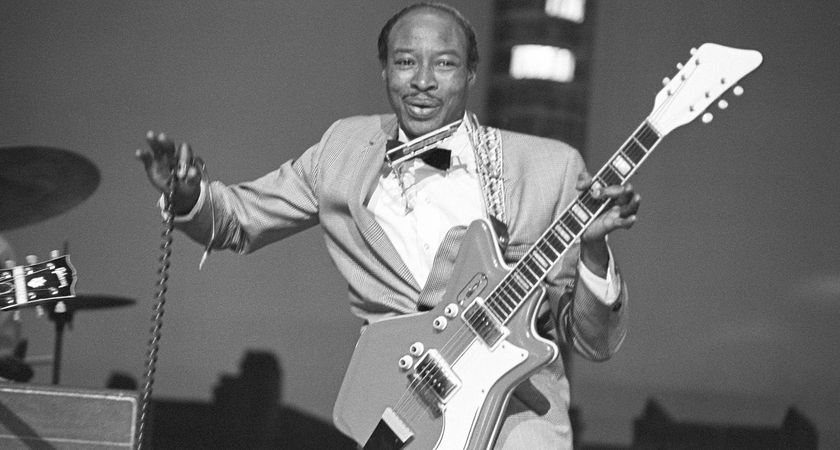After he had his first hit at 15 years old, Paul Simon became one of the all-time great songwriters, but he’s a remarkable guitar player, too – and he learned his precise fingerstyle approach from the English folk masters
There is a case to be made that Paul Simon is one of the most underrated guitarists ever, but maybe that's because he always foregrounds the song. This lesson shows just what a clever player he is

Astonishingly, Paul Simon has been in the music industry virtually his whole life, since his first hit came at the age of 15, when he and Art Garfunkel entered the Top 50 with Hey Schoolgirl. Simon started from a background in 1960s pop before moving to American folk with schoolfriend Garfunkel. He has also experimented with ethnic music including styles from Brazil, South Africa, New Orleans Cajun, and more.
The development of Simon’s guitar style is interesting and his sophisticated, worldly approach elevates him above many of his peers. There are all the usual references you would expect of an artist of his era from trad-blues picking (alternating basslines) to deft American folk-style fingerpicking.
Perhaps what sets Simon apart from his contemporaries is the time he spent touring England before Simon and Garfunkel were a household name. Simon became friends with English folk legend Martin Carthy and picked up his signature sound along the way, not least the modal approach at the core of English folk, alongside a Baroque influence you’ll find in the playing of John Renbourn.
All this is apparent in a track like Scarborough Fair. That alone would have been a great achievement but to understand Simon’s range as a guitarist, contrast the pastoral Scarborough Fair with the aggressive Mrs Robinson and its bluesy licks and dynamic uptempo strumming.
The more advanced American folk guitarists of the 1960s and 1970s have a certain sound that moves beyond the trad folk sound that preceded them.
Add to this list a player like James Taylor and you hear more adventurous ideas usually with intricate picking patterns, intro and ending licks, a slight jazz influence and unexpected, often jazz-inspired chords which are a hallmark of Paul Simon’s writing style (think of Fifty Ways To Leave Your Lover).
He has a great sense of timing with picking-hand precision driving things along, whether he is performing solo or with his band.
Matching Simon’s fingerpicking speed and precision can be challenging, so this study focuses on the style of The Boxer (where Paul and session guitarist Fred Carter Jr traded licks). Rapid arpeggios and alternating basslines are the order of the day here.
Most acoustic guitarists are keen to learn some of Paul Simon’s material, so bear in mind that it takes time to build picking-hand dexterity to match his. The fretting hand typically holds a chord shape leaving the picking hand as the engine room. Things get easier when you recognise and learn that Simon’s playing is typically based around stock picking patterns.
Paul Simon is a true music legend as songwriter, interpreter and player. Check out as much of his back catalogue as you can and you’ll discover a rich seam of fingerstyle repertoire to get into your own playing.
Get the tone
Amp Settings: Gain 3, Bass 7, Middle 6, Treble 7, Reverb 2
Simon has used all sorts of guitars (he plays electric, too) but key instruments are a Martin D-28 and OM models, the Paul Simon Martin signature, an Ovation and the black Yamaha acoustic guitar masterbuilt by Terumi Nakamoto and used on the legendary Central Park gig in New York. I used a Martin Custom Shop Expert 1937 D28 through a Soyuz 017, FET microphone.
Paul Simon style examples
[Bars 1-14] This intro is typical of artists like Paul Simon and James Taylor. There are several picking-hand choices; a traditional fingerstyle approach would see you use the first finger (i) for the third string and the third finger (a) for the first string, though you may want to try the thumb (p) for the third string and the first (i) or second (m) finger for the first string.
In bar 3 you meet the alternating bassline (p for bass notes, i, m and a for higher chords), a common picking pattern for folk-pop players. Watch out for the 16th note quick arpeggiating at the end of the bar as the change of pattern and strings can be challenging.
[Bars 15-32] Notice a change of chords and picking-hand position down the strings from this point. However the principles remain the same so focus on getting the accuracy and speed in place.
In bar 31 there’s an alternative shorter version of the intro figure moved down an octave. These ideas based around intervals of 6ths are common in 1960s and 70s American folk-pop so it’s worth learning how to harmonise your major scale, particularly 3rds and 6ths.
Get The Pick Newsletter
All the latest guitar news, interviews, lessons, reviews, deals and more, direct to your inbox!
Stuart Ryan is best known for his acoustic guitar playing, from Celtic fingerpicking and traditional folk to modern percussive phrasing and fresh interpretations of popular pieces. He has released several solo albums, written pieces for UK examination boards and created nine tutorial books ranging from acoustic guitar arrangements to Americana styles.
![Joe Bonamassa [left] wears a deep blue suit and polka-dotted shirt and plays his green refin Strat; the late Irish blues legend Rory Gallagher [right] screams and inflicts some punishment on his heavily worn number one Stratocaster.](https://cdn.mos.cms.futurecdn.net/cw28h7UBcTVfTLs7p7eiLe-840-80.jpg)
“The intensity of Rory’s guitar playing – the emotion, the sound and his incredible attack – was mindblowing for me”: Joe Bonamassa pays tribute to the late, great Irish blues-rock icon Rory Gallagher

“For some players, their approach to rhythm guitar is, ‘Oh, someone else gets to do all of the fun stuff while I do this…’” Think playing rhythm guitar is boring? Cory Wong is here to change your mind












